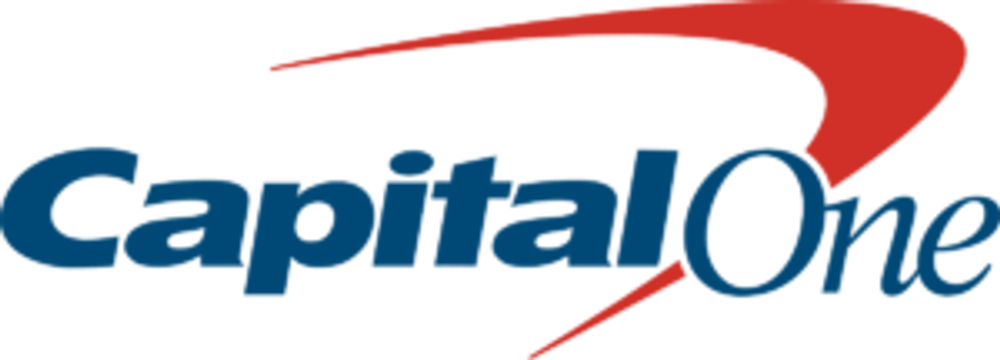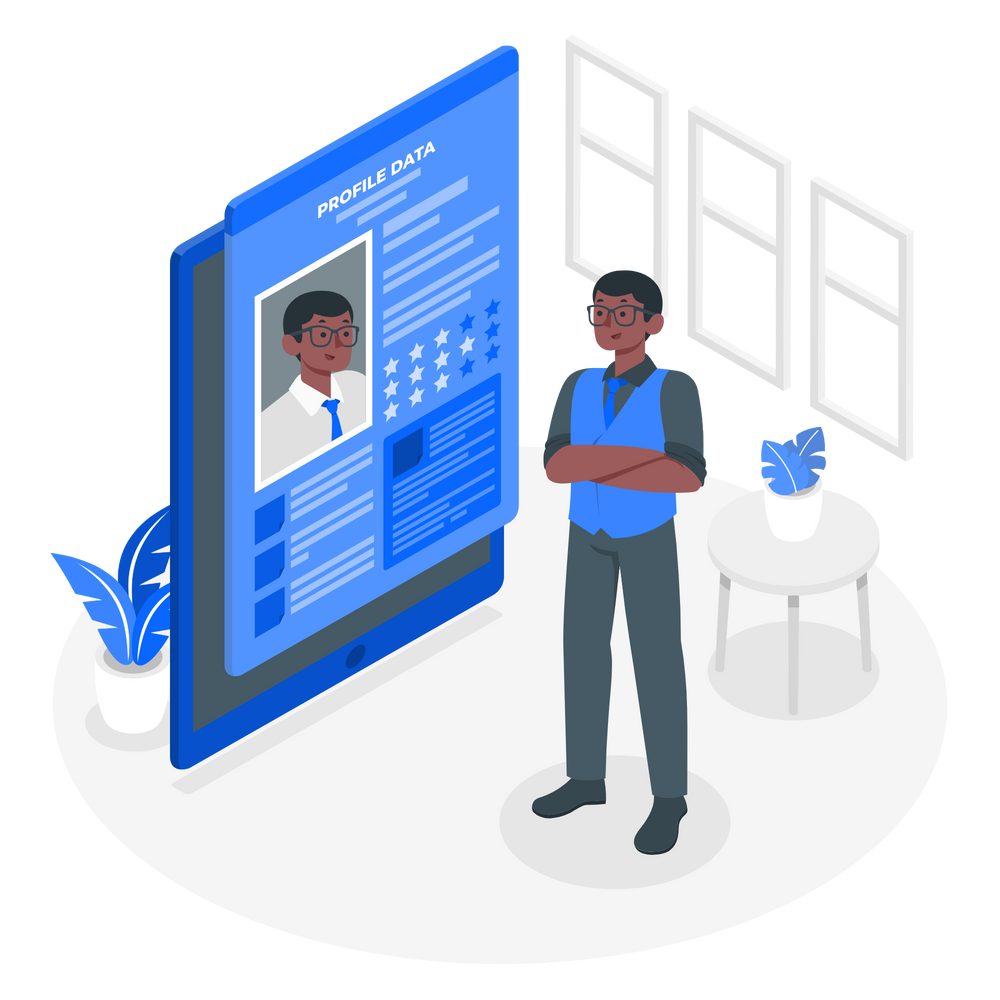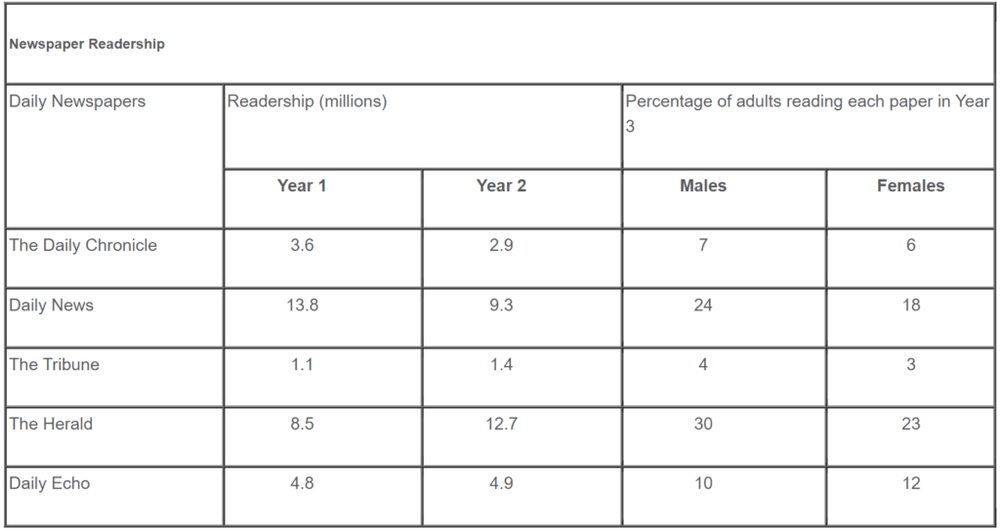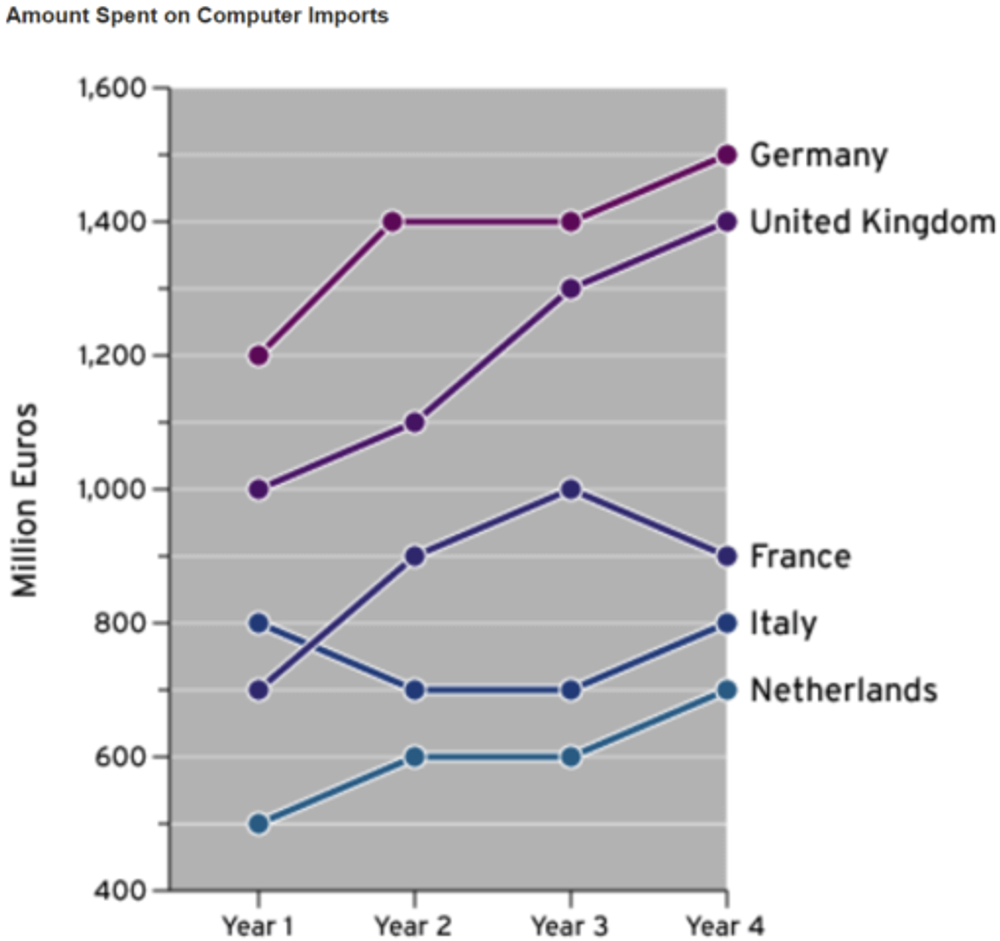Capital One Financial Corporation is one of the few non-consulting firms famous for using case interviews in the recruitment process.
Lately, I’ve getting a lot of questions on Capital One case interviews from people with various backgrounds and goals, so today I’ll invite you all to tackle this topic with me, and learn how Capital One cases differ from their consulting counterparts.
Capital One hiring process
What is Capital One?
Capital One is the 5th biggest commercial bank in the US, with 396M USD in total assets. Capital One specializes in 3 main products: credit cards, retail banking, and commercial banking services. Typically, an employee at Capital One is paid an average annual salary of $101,500, with precise figures ranging from $63,000 to $150,000 depending on his/her position.

Capital One hiring process
Capital One recruitment process includes 4 rounds: (1) resume & cover letter, (2) online assessment test, (3) video interview, (4) Power Day. The whole process typically takes two to three weeks. An essential part of last two rounds is the case interview – where candidates are required to solve simulated business problems in about 20-30 minutes.
At Capital One, the position most similar to consulting – which we will talk about in this article – is the Analyst position in Business, Finance, Operation, and Data. It is this position that’s required to go through the case interview process already mentioned.
There is only one reason for Capital One to use this unique selection tool in their recruitment: Capital One has an in-house strategy division – that operates as internal consultants for the bank, planning strategies that help Capital One differentiate itself from other competitors in the market.
To be a part of this division, the employees must be very well-qualified with problem-solving, communication, and analytical skills, along with creativity, positivity, and flexibility. And there is no comprehensive way to recruit such a talent like this, but Case Interview.
Understanding the fundamental concepts behind a recruitment process is a good start, from then on, forms the right mindset, prepares thoroughly, approaches the case properly, and is ready to win the game!
Now, go with me and I will show you.
Capital One – Resume screening
Most people get rejected during resume screening – yet most people don’t spend enough effort on perfecting their resume. Since the result-oriented and peculiar nature of consulting resumes are also helpful in other areas, I would advise you to read this comprehensive guide on resume writing. Here’s the short version of the guide:
Your resume must vigorously address three attributes of leadership, achieving, and problem-solving, by covering these three factors.
- Content: display the most valuable achievements, and strengthen them with quantitative results rather than merely job description
- Language: professional and straight-to-the-point
- Visual: consistent, easy to read; using a consulting resume template is highly recommended.
Keep in mind that every firm has its own “scoring standard” to mark your paper, and you only have one side of the A4 page to prove “I am the one you’re looking for.” Therefore, ensure that you do understand Capital One’s recruiting metrics and utilize every single space to be directly tied to those values.

Capital One – Online assessment test
There are 3 tests that you need to complete in this online psychometric assessment, which lasts 60 to 90 minutes: Behavioral Test, Verbal Test, and Numerical Test.
Behavioral test
The online assessment starts with the Behavioral Test. The test consists of multiple-choice questions presenting hypothetical scenarios with common problems in the workplace. Your job is to figure out the most suitable answer (e.g. Most and Least effective response in the situation for situational judgment questions) to the situation among a few possible options.
The purpose of this test is that the recruiters want to know your working style and experience, how you might cooperate with co-workers, and how you contribute to the working environment here.
EXERCISE
You work as an advisor in a call centre. Two days ago, you took a call from a customer who needed some specialist advice that was outside your area of expertise. At the time, you were unable to get hold of the internal specialist who would be able to help the customer with their query, so you promised that you would have someone call them back within 24 hours to help them.
You have just realised that you got caught up on other calls, and forgot to send a request to the specialist to contact the customer. You have not heard anything more from the customer since they called two days ago though.
A. Immediately call the customer back, explain your mistake and promise that you will ask a specialist to call them immediately.
B. Add a note to the customer’s file saying the query wasn’t followed up but the customer has not been in touch, so the need has likely passed.
C. Call the specialist to explain what you have done and apologise to them, but ask whether they could call the customer now.
D. Tell your manager what has happened and ask them to contact the customer to apologise on your behalf and see if they still need the help.
EXERCISE
You are working as a sales assistant in the technology department of a large department store. You are helping a customer who is interested in purchasing a laptop, and when another customer approaches you, they look very upset. They interrupt your conversation and demand a refund on a fan they had purchased earlier in the week, that isn’t working properly.
As you scan the shop floor to see if another colleague can help the second customer while you finish with the first customer, you quickly realise there isn’t anyone in your eyesight.
A. Apologise to the second customer and explain you are already helping someone but promise that you will assist them immediately afterward.
B. Politely ask the first customer you are speaking to if they can wait a moment while you try to resolve the issue for the customer who is upset.
C. Apologise to both customers and explain that you will go and find another colleague who can help the second customer resolve their issue.
D. Suggest that you call one of the store supervisors and ask them if they can come to your department to help the second customer with their complaint.
Verbal reasoning
Capital One recruiters place high interest in applicants who show a high aptitude for verbal reasoning. So expect that you will be tested with your comprehension ability towards written materials.
The test consists of several short texts and a concluding statement, followed by multiple-choice questions, mainly in the TRUE, FALSE, or CANNOT BE DETERMINED BASED ON THE INFORMATION PROVIDED format. If you have ever taken any type of passage-based standardized testing, then you can get familiar with Capital One’s Verbal Reasoning.
One keynote to take: the answers are only based on the information provided – no past experiences or knowledge involved. Therefore, make sure to focus on only the context given by the test and solve the issue.
Here are a few examples of verbal reasoning questions from SHL.
EXERCISE
Passage:
Many organizations find it beneficial to employ students over the summer. Permanent staff often wish to take their own holidays over this period. Furthermore, it is not uncommon for companies to experience peak workloads in the summer and so require extra staff. Summer employment also attracts students who may return as well-qualified recruits to an organization when they have completed their education. Ensuring that the students learn as much as possible about the organization encourages interest in working on a permanent basis. Organizations pay students on a fixed rate without the usual entitlement to paid holidays or bonus schemes.
Statement 1: It is possible that permanent staff who are on holiday can have their work carried out by students.
A. True
B. False
C. Cannot Say
Statement 2: Students in summer employment are given the same paid holiday benefit as permanent staff.
A. True
B. False
C. Cannot Say
Statement 3: Students are subject to the organization’s standard disciplinary and grievance procedures.
A. True
B. False
C. Cannot Say
Statement 4: Some companies have more work to do in the summer when students are available for vacation work.
A. True
B. False
C. Cannot Say
Answer - Statement 1
This statement is true (Option A) as the passage states: “Many organizations find it beneficial to employ students over the summer. Permanent staff often wish to take their own holidays over this period.”
Answer - Statement 2
This statement is false (Option B) as the passage states: “Organisations pay students on a fixed rate without the usual entitlement to paid holidays or sick leave.”
Answer - Statement 3
We cannot say whether this statement is true or false (Option C) as the passage does not make reference to the discipline or grievance procedures for students.
Answer - Statement 4
This statement is true (Option A) as the passage states: “Furthermore, it is not uncommon for companies to experience peak workloads in the summer…”
Numerical reasoning
Numerical reasoning is a fancy term for math tests. You are applying to a bank, for the analyst position. 100% you will need math.
The test includes a total of 30 questions in 35 minutes, based on the format of Cappfinity – a world-leading strengths-based assessment specialized for organization recruitment – which focuses on math questions.
- Statistical tables, charts, and graphs
- Basic mathematical operations: addition, subtraction, multiplication, division
- Simple calculations: ratios, percentages, etc.
Most of the time, these questions are usually carried out in the form of multiple-choice questions. This is a good point. Because even if you don’t know the exact answer, you can always have a back-up plan: guessing and eliminating the wrong ones.
What’s more? You can use a calculator.
Here are a few examples of numerical questions from SHL:
EXERCISE

Question 1: Which newspaper was read by a higher % of females than males in Year 3?
A. The Tribune
B. The Herald
C. Daily News
D. Daily Echo
E. The Daily Chronicle
Question 2: What was the combined readership of the Daily Chronicle, the Daily Echo, and The Tribune in Year 1?
A. 10.6
B. 8.4
C. 9.5
D. 12.2
E. 7.8

Question 3: In Year 3, how much more than Italy did Germany spend on computer imports?
A. 650 million
B. 700 million
C. 750 million
D. 800 million
E. 850 million
Question 4: If the amount spent on computer imports into the United Kingdom in Year 5 was 20% lower than in Year 4, what was spent in Year 5?
A. 1,080 million
B. 1,120 million
C. 1,160 million
D. 1,220 million
E. 1,300 million
Answer - Question 1
To answer this question, you need to compare the data in the column ‘Percentage of adults reading each paper in Year 3’ from the Newspaper Readership table. The only newspaper with more female than male readers is the Daily Echo. Therefore, the answer is D
Answer - Question 2
To answer this question, you need to look at the data in the “Year 1 Readership (millions)” column from the Newspaper Readership Table.
To calculate the combined readership for the three newspapers mentioned, add the readership numbers.
Therefore, the solution to this answer would be calculated as follows:
The Daily Chronicle readership = 3.6 million
Daily Echo readership = 4.8 million
The Tribune readership = 1.1 million
⇒ TOTAL READERSHIP = 9.5 million
Therefore, the answer is C.
Answer - Question 3
To answer this question, you need to look at the figures from Germany and Italy for Year 3 in the ‘Amount Spent on Computer Imports’ graph.
Germany spent 1,400 million Euros and Italy spent 700 million Euros.
To work out how much more Germany spent than Italy, simply calculate the difference (1,400 million – 700 million), which leaves 700 million euros.
Therefore, the answer is B.
Answer - Question 4
To answer this question, you need to look at the figures from the UK in Year 4 from the ‘Amount Spent on Computer Imports’ graph.
From here, we can see that 1,400 million euros was spent in Year 4.
To calculate the amount spent on computer imports in Year 5, we need to calculate 20% of 1,400 million:
1,400 (million) x 0.20 = 280 million (this is 20% of 1,400 million)
1,400 million – 280 million = 1,120 million.
Therefore, the answer is B.
Capital One – Video interview
Another part of the online assessment round is online interview. You might be in either a video interview on conference tool Zoom, or have a phone interview, which is said as more common to Capital One.
Capital One video interview process
This round covers both fit questions and case questions.
First, you will start with fit questions. They are used to verify your work history, availability, salary expectations, and skill sets. Especially for this part, keep your answers highly structured while displaying the 3 main attributes – leadership, achieving, and problem-solving. Try story-telling techniques as I explained here.
Next is a short case interview. It is where you are going to analyze a hypothetical business situation and give recommendations on how to proceed with the plan, which I will explain in more detail later. A proper case interview prep takes about 1-2 months at least, so it will only do you good to start as soon as possible. Get off on the right foot with my all-in-one guide right here, you can ace this round.
Tips for a successful Capital One video interview
Here is a checklist for a successful online interview:
- Practice first: make sure that you fully understand the context of the interview and go through all possible questions beforehand; have mock interviews with yourself or friends;
- Keep your answers short (but not too short): prepare your scripts in advance, decide whether you tend to be a “drag on” or “cut short” type, then adjust accordingly with you under-time-pressure practice
- Technical setup: find a quiet and private place, away from any possible interruptions; make sure the spot having enough light; check all the technical work such as connection, computer micro, audio, and webcam; close all the unnecessary web browser tabs and applications so that you only focus on your interview; set the phone to silent;
- Materials: have a copy of resume and any other notes for reference; bring a notepad and a pen/pencil aside to take note;
- Dressing: wear professionally, avoid too bright colors.
Power Day
Once you pass the Online Assessment Round and are shortlisted for the position, you will be contacted for a sit-down interview – the Power Day. A typical interview contains 2 parts: behavioral interview and of course, case interview.
Depending on the nature of the position and its seniority, you may be in one of three forms of interview:
- One-on-one interview, with a departmental manager
- Panel interview, with departmental managers and HR personnel
- Group interview
Capital One – Behavioral interview (Power Day)
While video interviews or phone screenings will focus more on an applicant’s previous experience and approach toward their work, this Behavioral interview will be more concerned with the job seeker’s behavioral characteristics and his/her work ethics. At this section, Capital One looks for 3 attributes in their candidates:
- Leadership: the ability to influence people, and work effectively in teams
- Achieving: the willingness to go beyond what is asked, and strive for the best results
- Problem-solving: the ability to break down problems in a structured, top-down approach
The questions asked at Capital One will fall into two main categories:
(a) Motivational questions, ask you to explain why you are applying to this specific industry and this firm. Normally, the interviewers may want you to connect the unique features, projects, and people of Capital One to your future plan and personal values, showcasing that you are ready for long-term commitment
- Why do you want to work for Capital One?
- Why are you applying for this job?
- What do you know about Capital One?
(b) Personal Experience Interview (PEI) questions, test how you behave in particular situations in the firm’s working environment. No matter what the questions might be, you must cover all the three attributes above with authentic, engaging, convincing stories.
- Discuss a time when you had to address a difficult customer.
- What are your strengths/weaknesses?
- If we give you a book containing 100 accounts, how would you organize it?
- How would you motivate an employee who was not performing their duties?
- Name a time you had to learn something new.
In this section, you can use the STAR format (Situation – Task – Action – Result) to plan for the behavioral question clearly and methodically.

Capital One – Case interview (Power Day)
What is case interview?
A case interview is a job interview where the candidate is asked to solve a business case or problem. It is the cornerstone of consulting recruitment playing a decisive role in final results, however is also used as a significant hiring process of Capital One. Case interviews are modelled after the course of actions real consultants do in real projects, where candidates are tested with the ability to think analytically, probe appropriate questions, and make most client-friendly pitches. Therefore, excellent performance in this section means that you are a good analyst for Capital One.
Here are a few example case questions:
- “We have a restaurant called “In-and-out Burger” with recently falling profits. How can you help?”
- “The CEO of a cement company wants to close one of its plants. Should they do it?”
- “A top 20 bank wants to get in top 5. How can the bank achieve that goal?”
Generally, there are 2 styles of conducting case: Candidate-led and Interviewer-led. At Capital One, they use the Interviewer-led style, of which the interviewer controls the process. However, I heartfeltly advise you to ignore this and try to control the case as if it’s candidate-led. It shows you having that leading and proactive personality, which is highly interested by Capital One recruiters.
Capital One case interview example
Looking at this tutorial, two features set Capital One case interviews apart from their consulting cousins:
- Very math-intensive. As I had mentioned before, you are applying to a bank. You are expected to excel in doing mental math and understanding the numerical content. So you would want to double your preparation in the math aspect of case interviews.
- Surprisingly non-MECE. Perhaps because they are not a consulting firm, structure and MECE are not as important. When I watched their tutorial video, I couldn’t help but see a lot of obvious non-MECE holes in their illustrative cases. However, should we not use structure and MECE anymore? Well, the answer is, you’d better ignore this difference, and keep pretending as if you are interviewing with a highly structural-minded firm. Structure will become your habit and you will do fine in every case regardless of which firm you apply to.
Chances are, you don’t have a lot of time and the topic of case interview is too big. So, my advice here is to apply the 80-20 principle, learn the most time-effective principles of case interviews, just enough to do well. Spend the time that you saved on math.
Capital One case interview question
There are 9 types of question in Capital One case interviews:
| Framework/issue tree questions |
Market-sizing and guesstimate questions |
Valuation questions |
| Brain teaser questions |
Chart insight questions |
Value proposition questions |
| Information questions |
Solution-finding questions |
Math problems |
This means the question types at Capital One are quite similar to consulting interviewer-led cases – and that means you can use consulting prep materials to prepare for Capital One case interviews, too.
Here are a few articles I’ve written on these question types:
How to prepare for Capital One interviews
Step 1: Familiarize with interviewer-led case examples
Expose yourself to as many interviewer-led cases as possible. Use materials from this updated list of 35 case interviews examples from McKinsey, BCG, Bain, and Other. Or check out our Case Interview E2E Secret Program – complete, detailed feedback, all in video format.
Step 2: Practice consulting math
Master your math, especially mental math. It might be difficult, but you can practice and get used to the question format. Here are a few tips:
- Use your head. Practice mental calculations, everyday. This helps speed up your mathematical process as well as improve the accuracy over the time.
- Flatten the learning curve: At the start, a piece of scratch paper and a 5% margin of error really help; once you are confident, discard the paper and narrow down the margin.
- Establish a Routine: It might seem hard to stick to the plan at first. However, once you’ve overcome the inertia, you can literally feel the improvement.
Visit this in-depth consulting math article and train our Mental Math methodology to ace the test efficiently.
Step 3: Develop business intuition
You can improve your natural sense of the business world by reading consulting publications from McKinsey Insights, BCG Perspectives, and Bain Publications; train case interview questions occasionally; and apply what you read into real-life circumstances at the workplace – “What senior managers are doing?” “What’s the rationale for their decision, and how has it impacted the organization?”
Step 4: Learn the case interview question types
Master each and every question type I have mentioned before, start from basic to more complex and less predictable ones. In our Case Interview Questions, each type is well explained with tips and techniques to deliver ideal answers. Key takeaways: treat them like mini-cases, be structured, always use the MECE approach.
Master each and every question type I have mentioned before, start from basic to more complex and less predictable ones. In our Case Interview Questions, each type is well explained with tips and techniques to deliver ideal answers. Key takeaways: treat them like mini-cases, be structured, always use the MECE approach.
Step 5: Perform mock interviews
The best way to get good at something is to do it.
Find yourself a former consultant to help you practice; they’ve been through countless case interviews, both real and mock, they know what’s required of a candidate, so they’re the best people to run your simulations with.
Fortunately, MConsultingPrep does offer a coaching service where you can choose a highly experienced coach. They will provide you with their insider knowledge of how to stand out in a case interview. Your meeting with coaches will be tailored to your specific wishes and you’ll get detailed feedback on your weak areas.
Study your cases down to the smallest details. Replay them over and over and over again, take notes of the interviewer’s feedback, and look for other areas you can improve.
Bonus: Dress Code
Not the utmost, but is crucial to make a good impression.
- For gentlemen: Tie and suit, always. Think of the well-groomed gentleman walking down the streets from “The Wolf of Wall Street” or “Suits” – that’s how you want to look. Remember to choose a tie and dark socks that match your suit also.
- For ladies: wear a skirt at a medium length, not too tight, and keep heels at a sensible height.
And, that’s it. Keep your chin up and rock the interview. Good luck!
Want a more in-depth look into details in interview-led cases and other secrets to smash through any case interview? Check out our End-to-End Secrets Program, all in one package!
/filters:quality(75)//case_thumb/1669783363736_case_interview_end_to_end_secrets_program.png)